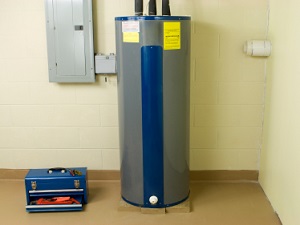Ways to Properly Care for Your Home's Hot Water System
Ways to Properly Care for Your Home's Hot Water System
Blog Article
We've encountered this article about How to Maintain Your Water Heater & Prolong its Life listed below on the internet and figured it made sense to quickly share it with you on this page.

Warm water is vital for everyday convenience, whether it's for a revitalizing shower or washing meals. To ensure your warm water system runs effectively and lasts longer, normal maintenance is key. This article offers practical tips and understandings on exactly how to maintain your home's warm water system to avoid interruptions and costly fixings.
Introduction
Keeping your home's hot water system might appear complicated, but with a couple of easy actions, you can ensure it runs smoothly for years ahead. This guide covers every little thing from comprehending your warm water system to DIY upkeep suggestions and knowing when to employ professional aid.
Significance of Keeping Your Hot Water System
Routine upkeep not just extends the life expectancy of your warm water system however additionally ensures it operates efficiently. Disregarding maintenance can cause decreased effectiveness, higher power expenses, and also early failure of the system.
Signs Your Warm Water System Demands Maintenance
Recognizing when your hot water system needs interest can protect against major issues. Watch out for indicators such as irregular water temperature level, weird noises from the heating unit, or rustic water.
Recognizing Your Warm Water System
Prior to diving into maintenance tasks, it's practical to recognize the basic components of your hot water system. Usually, this consists of the hot water heater itself, pipes, anode rods, and temperature controls.
Regular Monthly Upkeep Tasks
Regular month-to-month checks can aid capture small issues prior to they escalate.
Purging the Hot Water Heater
Flushing your hot water heater removes sediment accumulation, improving effectiveness and prolonging its life.
Checking and Replacing Anode Rods
Anode poles avoid rust inside the storage tank. Examining and changing them when broken is vital.
Examining and Adjusting Temperature Setups
Adjusting the temperature level settings guarantees ideal efficiency and safety and security.
DIY Tips for Maintenance
You can do numerous upkeep jobs on your own to keep your hot water system in top problem.
Looking for Leakages
Regularly evaluate pipelines and links for leakages, as these can cause water damages and higher bills.
Testing Stress Relief Valves
Testing the stress safety valve guarantees it works properly and stops too much stress build-up.
Insulating Pipelines
Shielding warm water pipes decreases heat loss and can save energy.
When to Call a Specialist
While DIY maintenance is beneficial, some problems call for professional know-how.
Facility Problems Calling For Specialist Assistance
Instances consist of major leakages, electrical troubles, or if your water heater is regularly underperforming.
Regular Specialist Upkeep Perks
Professional upkeep can include comprehensive assessments, tune-ups, and guaranteeing compliance with safety standards.
Verdict
Regular upkeep of your home's hot water system is crucial for performance, long life, and price financial savings. By complying with these suggestions and recognizing when to look for expert aid, you can make sure a dependable supply of warm water without unexpected disruptions.
How to Maintain an Instant Hot Water Heater
Before tinkering with your hot water heater, make sure that it’s not powered on. You also have to turn off the main circuit breaker and shut off the main gas line to prevent accidents. Also turn off the water valves connected to your unit to prevent water from flowing into and out of the appliance. 2. When you’re done, you have to detach the purge valves’ caps. These look like the letter “T†and are situated on either side of the water valves. Doing so will release any pressure that has accumulated inside the valves while at the same time avoid hot water from shooting out and burning your skin. 3. When the purge valves’ caps are removed, you have to connect your hosing lines to the valves. Your unit should have come with three hoses but if it didn’t, you can purchase these things from any hardware or home repair shops. You can also get them from retail stores that sell water heating systems. Read the user’s manual and follow it to complete this task properly. When the hosing lines are connected, open the purge port’s valves. 4. You should never use harsh chemical cleaners or solutions when cleaning your unit. Make use of white vinegar instead. It should be undiluted and you’ll probably use about 2 gallons. 5. Now flush your water heater. This task should probably take about 40 minutes. We can’t give you specific directions for this because the procedure is carried out depending on the type, model and brand of your heater. With that being said, refer to the user’s manual. 6. When you’re done draining the unit, you have to turn off the purge port valves again. Remove the hosing lines that you earlier installed on each of the water valves. Put the valve caps (purge port) back in their respective places and be very careful so as not to damage the rubber discs that are found inside these caps. 7. Now that everything’s back in place, check your user’s manual again to find out how to reactivate your water heating system. 8. Once it is working, turn one of your hot water faucets on just to let air pass through the heater’s water supply pipes. Leave the tap on until water flows smoothly out of it. https://www.orrplumbing.com/blog/2014/september/how-to-maintain-an-instant-hot-water-heater/

Hopefully you enjoyed reading our part about How to Maintain a Hot Water Heater in a Few Simple Steps. Thank you for taking a few minutes to browse our blog. Enjoyed our piece of writing? Please quickly share it. Help others find it. Thank-you for your time spent reading it.
Suggested Site Report this page